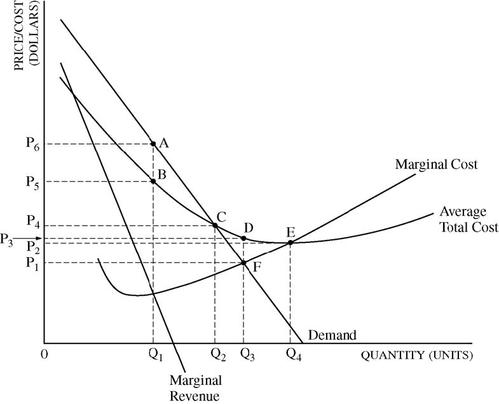Multiple Choice
1. From the point of view of economic efficiency, a monopolist produces
(a) too much of a good and charges too low a price
(b) too much of a good and charges too high a price
(c) too little of a good and charges too low a price
(d) too little of a good and charges too high a price
(e) the socially optimal amount of a good
2. As its output increases, a firm’s short-run marginal cost will eventually increase
because of:
(a) diseconomies of scale
(b) a lower product price
(c) inefficient production
(d) the firm’s need to break even
(e) diminishing returns
3. For a firm hiring labor in a perfectly competitive labor market, the marginal
revenue product curve slopes downward after some point because as more of a
factor is employed, which of the following declines?
(a) Marginal product
(b) Marginal factor cost
(c) Marginal cost
(d) Total output
(e) Wage rates
(a) too much of a good and charges too low a price
(b) too much of a good and charges too high a price
(c) too little of a good and charges too low a price
(d) too little of a good and charges too high a price
(e) the socially optimal amount of a good
2. As its output increases, a firm’s short-run marginal cost will eventually increase
because of:
(a) diseconomies of scale
(b) a lower product price
(c) inefficient production
(d) the firm’s need to break even
(e) diminishing returns
3. For a firm hiring labor in a perfectly competitive labor market, the marginal
revenue product curve slopes downward after some point because as more of a
factor is employed, which of the following declines?
(a) Marginal product
(b) Marginal factor cost
(c) Marginal cost
(d) Total output
(e) Wage rates
Free-Response

Social efficiency is affected by government policy and the structure of markets.
(a) For a competitive market for which there is a binding (effective) price ceiling, draw a correctly labeled
graph and label the price ceiling “PC”, the quantity sold “QA”, and the socially efficient output “QB”.
(b) The graph below shows a natural monopoly.
(i) Using the labeling in the graph, identify each of the following.
(1)The profit-maximizing output
(2)The socially efficient output
(ii) At the socially efficient output, is the monopoly making a profit or incurring a loss? Using the labeling
on the graph, identify the area of profit or loss.
(a) For a competitive market for which there is a binding (effective) price ceiling, draw a correctly labeled
graph and label the price ceiling “PC”, the quantity sold “QA”, and the socially efficient output “QB”.
(b) The graph below shows a natural monopoly.
(i) Using the labeling in the graph, identify each of the following.
(1)The profit-maximizing output
(2)The socially efficient output
(ii) At the socially efficient output, is the monopoly making a profit or incurring a loss? Using the labeling
on the graph, identify the area of profit or loss.
